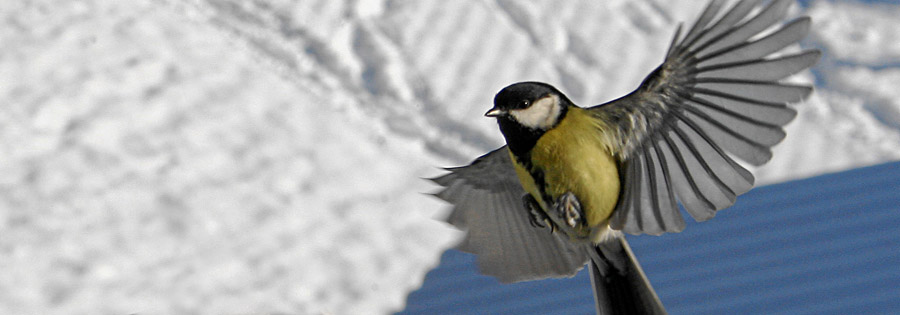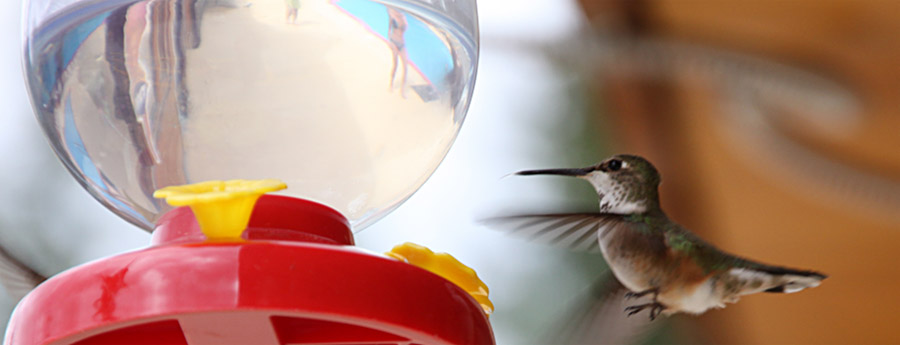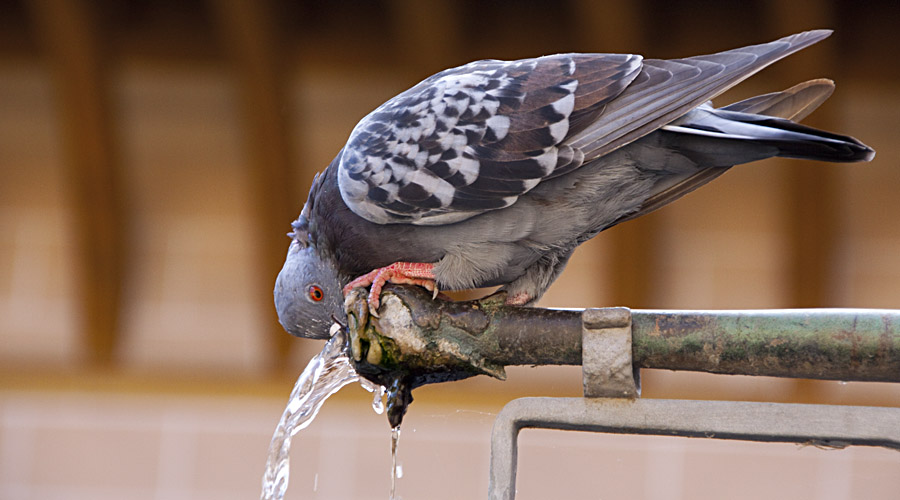
Bird while landing - shot exposure time necessary (photo: A. Pratzner)
- Camera:
- Canon EOS 350D
- Aperture:
- f/10
- Exposure:
- 1/1000 seconds
- ISO:
- 400
- Focal length:
- 55 mm
Exposure time
How to use exposure
It all depends on the motive you have, in some cases you can favour the default settings of the camera for the exposure time. If you want to capture fast movements, then you should determine the exposure time yourself.
The specification of the exposure time is given in seconds. Mostly, you will have an exposure time of a fraction of a second, so, a setting of around 1/60 or 1/200 of a second is reasonable for taking a photo.
The exposure time is important for 3 things:
- The exposure time adjusts, how long light will fall onto the image sensor, and therefore, if too much or too less illumination is present for a correctly exposed photo.
- Depending on your set exposure time a photo made out of the hand can be sharp or blurred. The longer the exposure time, the higher is the risk of a blurred photo.
- The exposure time depends on the motive and meaning (For example, do I want to show moving water flowing or frozen?)
Sharp photos through correct exposure
Taking sharp photos out of the hand through the right choice of exposure time
Through the right choice of exposure time you are able to take sharp pictures "out of the hand" (We do not speak about taking photos with a tripod yet). Humans simply cannot keep a camera 100% steady for a longer period of time. Henceforth it is crucial to choose the right exposure time to compensate the rocking, viz. one where the picture is already taken before we can blur it.
Exposure time = reciprocal value of the focal length. For instance: 50 mm focal distance, at least 1/50 s.
The rule of thumb (without image stabilization) is, that the exposure time should at least comply with the reciprocal value of the focal length. If a focal distance of 50 mm has been chosen, then the exposure time should be at least 1/50 s. When using a focal distance of 200 m, then the exposure time should be at least set to 1/200 s.
This rule applies for photo motives (objects), which do not move at all (or only slightly).
If an image stablizator is built-in (and active), then you have ~ 2 - 3 possible f-numbers (see chapter about the aperture) as a buffer. Expressed in time: When I take photos with a 200 mm objective, then I would need 1/200 s without an image stabilizator; with one I could go down 2 f-numbers (brief excursion in the coming chapter about aperture: 1 step in f-numbers halves the time) so that sharp pictures with 1/200 s * 1/2 * 1/2 = 1/50 s are still possible with a focal length of 200 mm.
Shutter speeds for moving objects
Catch fast movements with a short exposure time
Short formula: Speed of the object + direction of movement + distance
When I want to take a picture of a moving object I consider the speed of its movement, its direction of movement and my distance towards it.

Colibri in mid-flight (photo: A. Pratzner)
- Camera:
- Canon EOS 50D
- Aperture:
- f/7,1
- Exposure:
- 1/400 seconds
- ISO:
- 400
- Focal length:
- 210 mm
For instance: a good first service at tennis can speed up the ball to 249,4 km/h (record of a professional tennis player).

First service at tennis (photo: A. Pratzner)
- Camera:
- Canon EOS 5D Mark II
- Aperture:
- f/4,5
- Exposure:
- 1/1250 seconds
- ISO:
- 100
- Focal length:
- 24 mm
For such a high velocity I will need a shutter speed of around
| Movement in relation to the camera | Shutter speed |
|---|---|
| by field of view/ image circle (90° towards the camera) | 1/5000 s |
| diagonal (45° towards the camera) | 1/2500 s |
| Direct towards the camera | 1/1250 s |
Table: Shutter speeds around 250 km/h
But even when taking pictures of a jogger you need shorter shutter speeds, instead when photographing objects at rest.
There are some terms for extremely long and extremely short exposure times:
When the values are shorter than 1/5000 seconds then we can speak of high-speed photography.
When the values are longer than 5 seconds then we can speak of bulb exposure.
Picture`s message about exposure time
By using the shutter speed and therefore the exposure time we can either capture objects and make them look like they are frozen in time or we can capture the movement based on blurriness (What I will show in the following pictures of running water). The example with water seems most fitting.

Waterfall Canada: the water looks like frozen in position (photo: A. Pratzner)
- Camera:
- Canon EOS 50D
- Aperture:
- f/7
- Exposure:
- 1/1000 Sek.
- ISO:
- 100
- Focal length:
- 35 mm

A pigeon drinking from a fountain: the water is blurred - fluent (photo: A. Pratzner)
- Camera:
- Canon EOS 50D
- Aperture:
- f/5,6
- Exposure:
- 1/160 Sek.
- ISO:
- 320
- Focal length:
- 120 mm
Focal point: Setting the exposure time of a camera
The exposure time is crucial for capturing and freezing moving objects or movements itself.
When using a Canon set the selector wheel to Tv (automatic aperture control). Now you can freely choose the shutter speed and the, for the light situation more specifically exposure time, appropriate aperture will be automatically set by the camera.

Tv-Setting for automatic aperture control
Controlling the amount of light with the exposure time
In combination with the aperture (which controls, how much light can fall onto the image sensor) and the exposure time (which regulates, how long can light fall into the camera) we now regulate the amount of light, which is allowed to fall into the camera. The next chapter will be about the aperture.
An appropriate amount of light is necessary for a correctly exposed photo (see chapter about the "correctly exposed image").